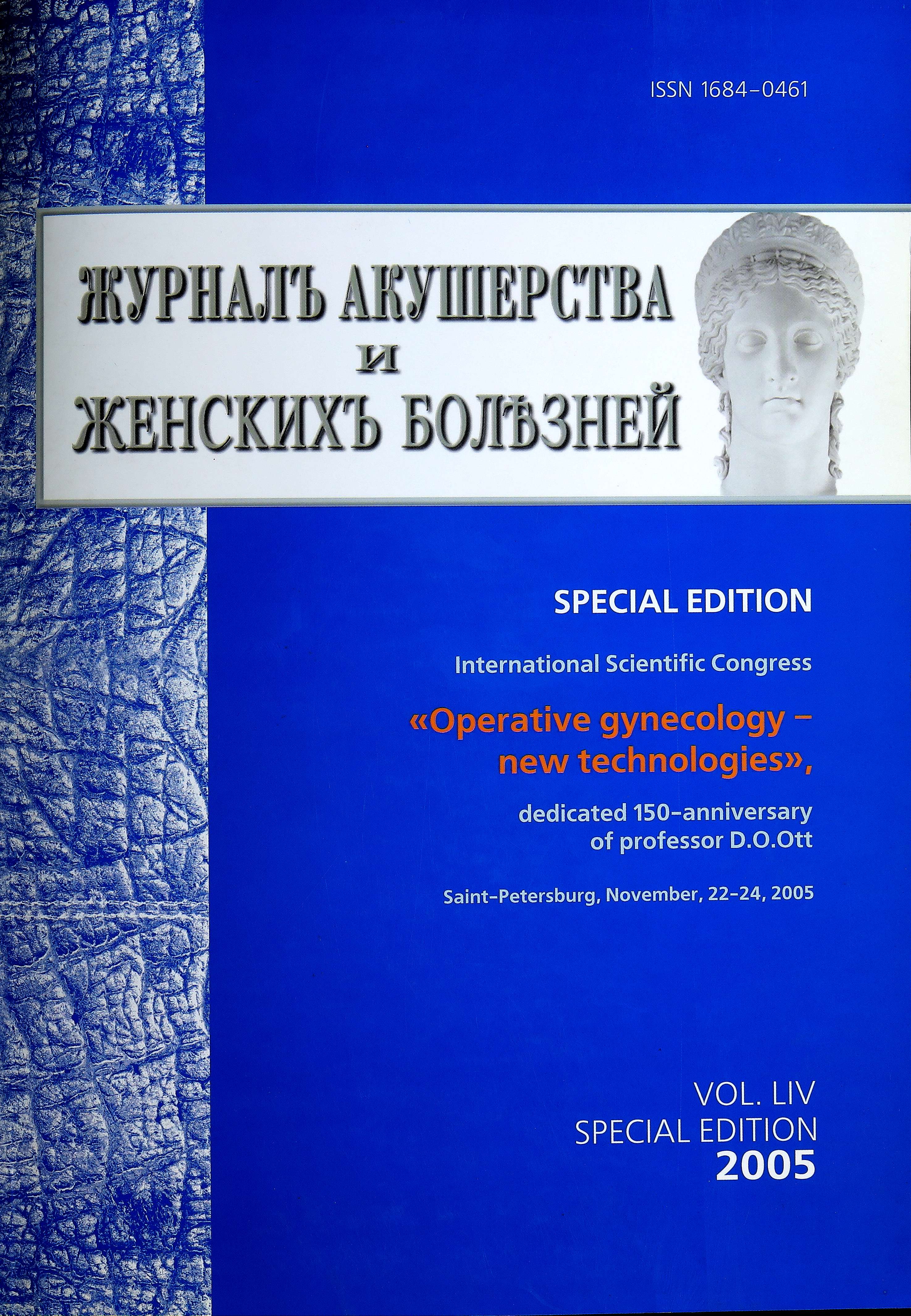Dynamic laparascopy as a stage of hospital rehabilitation in patients with tubal pregnancy
- Authors: Fatkullin I.F.1, Yagudina L.N.1, Mazitova М.I.1
-
Affiliations:
- Kazan State Medical University
- Issue: Vol 54, No 5S (2005)
- Pages: 32-33
- Section: Reviews
- Submitted: 15.11.2005
- Accepted: 06.11.2021
- Published: 15.11.2005
- URL: https://journals.eco-vector.com/jowd/article/view/87216
- DOI: https://doi.org/10.17816/JOWD87216
- ID: 87216
Cite item
Abstract
Objective: to study possibilities of dynamic laparoscopy in prevention and treatment of adhesions after surgical treatment of extrauterine pregnancy.
Full Text
Objective: to study possibilities of dynamic laparoscopy in prevention and treatment of adhesions after surgical treatment of extrauterine pregnancy.
Materials and methods. Dynamic laparoscopy was performed in 70 patients in early postoperative period after extrauterine pregnancy surgery. 15 patients was operated twice (3d and 5th, 3d and 7th days after surgery). Alone dynamic laparoscopy was performed on 3d day after surgery. The laparoscopic approach was made in 30 patients (42,9%) and laparotomic one - in 40 patients (57,1%). The volume of surgery was defined by pregnant uterine tube condition: tubectomy was performed in 32 patients (45,7%), salpingotomy with fetal sac aquadissection - in 22 patients (31,4%), fetal sac stamping - in 16 patients (22,9%). Adhesions were revealed intraoperatively in 40 patients with extrauterine pregnancy (57%). In these patients adhesiolysis was performed besides the basic surgery. To perform dynamic laparoscopy the special titan sleeves (trocar) were used. They were placed in paraumbilical area in case of laparotomy and instead of laparoscopic trocar in laparoscopy. After operation the sleeve was closed by cap. During dynamic laparoscopy the cap was removed and trocar was input through the sleeve. Dynamic laparoscopy allowed to remove peritoneal exudate, to perform abdominal cavity sanation and chromhydrotubation.
Results. In dynamic laparoscopy adhesions were revealed in 45 patients (64,2%). Repeated dynamic laparoscopy showed the absense of adhesions reorganization. Uterine tube or tubes patency was saved in 51 patients (72,9%). In three months after surgery repeated hysterosalpyngoscopy revealed the same rate of tubes patency. It is significantly higher than in population of patients operated for tubal pregnancy.
Conclusion. Dynamic laparoscopy in early postoperative period is effective method of adhesion diagnostics and prevention in patients after surgery for tubal pregnancy, it contributes to save the reproductive function.
About the authors
I. F. Fatkullin
Kazan State Medical University
Author for correspondence.
Email: info@eco-vector.com
Russian Federation, Kazan
L. N. Yagudina
Kazan State Medical University
Email: info@eco-vector.com
Russian Federation, Kazan
М. I. Mazitova
Kazan State Medical University
Email: info@eco-vector.com
Russian Federation, Kazan
References
Supplementary files







